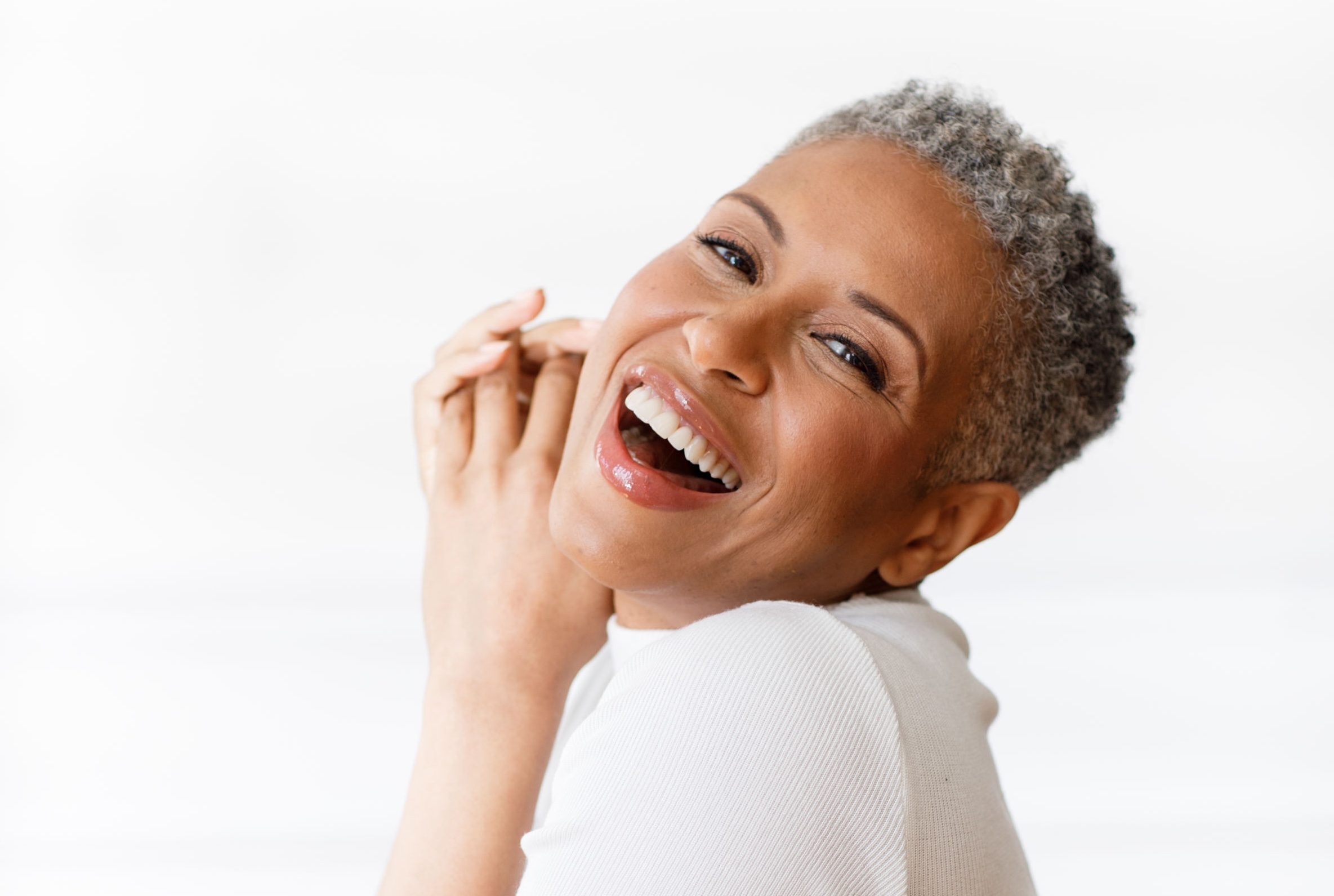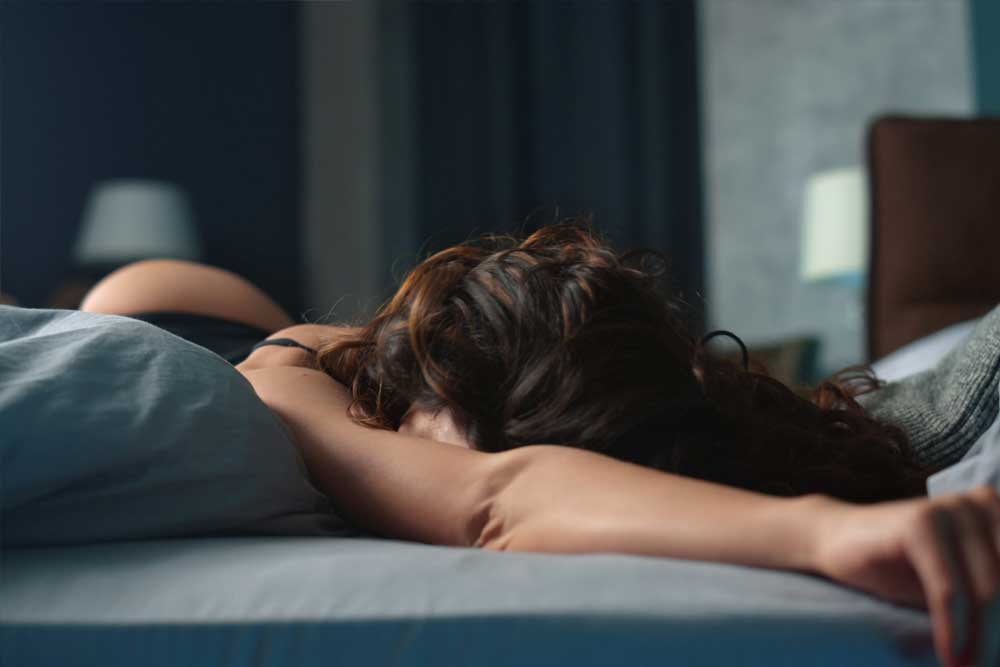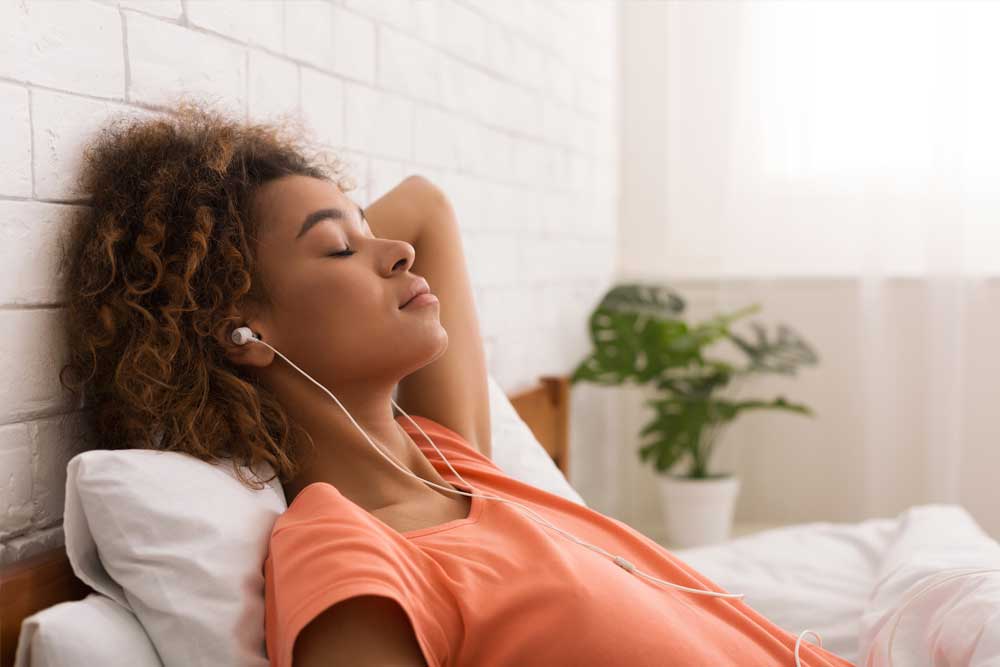Catrin Osborne, artist and director of circus theatre, is on a mission to share the realities of menopause – good and bad – in an exhibition of photography and interviews from women around the UK called ‘This is What the Menopause Looks Like’. Here, she shares how it came about, why it’s so important and the incredible stories she heard along the way.
Find what you need quickly
I knew nothing about menopause
My mum went through it when she was 44 when her periods stopped and that was it. But for me, I woke in the night with severe headaches and then had trouble sleeping. The headaches would start suddenly with heat travelling up my body into my head. I’d feel them coming on and get really scared. I went to the doctor when I was 44 and couldn’t believe it when she told me it was early menopause. I was offered HRT but it was an unknown to me and I was around women in the wellness industry who were telling me not to take it.
Read about HRT risks and benefits.
How HRT helped my symptoms
I’d given up drinking and tried natural things but in the end, it all got too much. My mental health was in a bad state because I wasn’t sleeping at all. Symptoms would come in waves, and swap between frequent peeing, headaches or bad insomnia. I hit rock bottom, went to the doctor and got HRT. It really did help.
When I started feeling better, I wondered if other women went through similar experiences to me. On top of all the symptoms, I’d felt very, very alone, isolated and scared. No one had warned me about it. If I brought it up in conversation when out with friends, it felt like a taboo. These things make you feel more vulnerable when you don’t have support.
On top of all the symptoms, I’d felt very, very alone, isolated and scared.”
The photo that inspired my menopause exhibition
An artist friend was illustrating how hard artists push themselves by taking selfies every day for a month. It’s just for you to see how tired you look. On the first day I did it, I had only just started HRT and the lack of sleep was really evident. I’ve still got that picture and I look like a corpse! But over the following month, I started noticing a change.
This inspired me to interview and take photos of women going through menopause. I got some interest when I shared my idea on social media. I called it ‘This is What the Menopause Looks Like’ and shared the stories of 24 women at the first exhibition in London.
I applied for funding from the Arts Council and the money meant the show could travel to other venues across the country. I interviewed women in Sheffield, Rochdale, Whitstable, Ramsgate, London, Bristol and Cardiff.
I contacted women’s groups and used social media to find at least five women in each place. I offered to pay people for their time but most wanted me to put the money back into the project.
Reflecting the diversity of menopause voices
It was important to me to capture a broad range of voices. For example, I met a refugee from Uganda who has lived in Cardiff for many years. I also talked to non-binary and neurodiverse people. I have dyslexia and ADHD and that may be the reason my symptoms were quite extreme. You have low dopamine levels with ADHD, which can be even more affected by oestrogen decline.
It was important to me to capture a broad range of voices.”
Menopause is unifying even if your experience is unique. I wanted women to feel less alone and part of a community with the common experience of having been through different yet similar experiences. There’s a lot of respect for each other without judgement about whether someone took HRT or not. Sharing their journey helped a many of the women find a sisterhood and a connection with other women that felt even stronger than when they had children. Every single exchange felt special.
Every single exchange felt really special.”
Helping women feel comfortable sharing experiences
Women are constantly being told what they should or shouldn’t do during menopause. These women are in a vulnerable position because they’re not feeling themselves, not sleeping and their emotions are up and down like a yo-yo. I approached the project by listening and presenting what the women said.
Some of the women were nervous about sharing and it is exposing, which is why we only use people’s first names. I told them to remember that 70 women were taking part and they were part of a tribe. They were allowed to pull out if they changed their minds, but no one did. In the interviews, many said that they didn’t give a shit what people thought of them anymore. That was a common thread.
Many said that they didn’t give a shit what people thought of them anymore.”
In Cardiff, a woman had to stop playing the violin as she had osteoporosis and kept breaking her wrist. She started a choir called ‘Only menopause allowed’, which she conducted. You can see her in the exhibition standing in the doorway of her house with her violin and her arm is in a sling.
Another lady went through menopause in her 20s and is an extreme marathon runner! She’s really good at it and wins races. She was told she couldn’t take HRT for quite a long time and then they eventually found out what she needed. I don’t think everyone needs HRT but when I think about how rough I felt before I took it, I don’t think I could have carried on without it.
I let the women see their interview write-ups and photos before the exhibition to check they were comfortable. It was important for it to feel collaborative and a few women were quite triggered by telling their stories as it reminded them of difficult times. On the other hand, some women were passionate about it being seen by their children and people of their age group.
I don’t think everyone needs HRT but when I think about how rough I felt before I took it, I don’t think I could have carried on without it.”
Challenging menopause stereotypes
There is shame and secrecy around certain things women go through, including miscarriages, not being able to have children and IVF. I’d been through those experiences and thought I could have a rest as I was on the other side of it all. Then menopause came along and I thought ‘Bloody hell, not another thing that I’m not allowed to talk about!’
Women can feel they have to hide the pain of what they go through and I wanted to normalise it. Also, my friends around menopause age are such cool women – ex-punks and ravers – and not cardigan-wearing stereotypes! I wanted to present something objective so people could see the women, read their stories and make up their minds.
Women can feel they have to hide the pain of what they go through and I wanted to normalise it.”
Younger and menopausal women said they learned a lot from the information from the show. Some said it helped them to support other women that they knew going through a difficult time. It can also help men support friends or partners going through menopause, although not many men tend to visit the show. One of my male friends said that he loved the interviews as they gave a deeper insight into each personality.
What’s next?
It’s great that people are engaging more with menopause and there’ve been loads of books written on it in recent years. Diane Danzebrink is campaigning for better menopause care and she has been my mentor for this project. I admire her because she went through her own ordeal during menopause and is using her experience to help others.
So far we have been to London, Bristol, Ramsgate, Frome and Brighton Fringe – where we were nominated for an award for the exhibition. In Frome we were approached by the Royal Photographic Society Documentary Group and we’re really excited about being featured in its next publication.
I’ve also had a lot of feedback saying the show should be made into a book, which we’re working on. Watch this space!
Read more about menopause on our blog or in our symptoms library.




